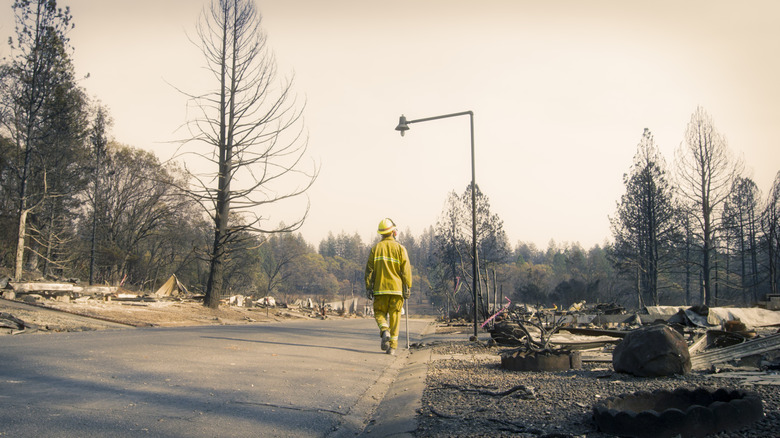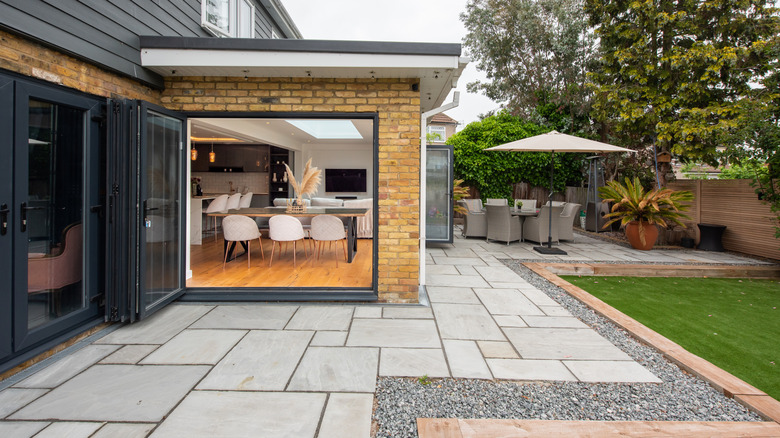A Big Change To Landscaping Laws And What It Means For California Residents
California is drawing a hard line in the baked dirt: New regulations will soon require that the narrow strip of landscaping surrounding homes in high-risk fire zones, dubbed the "ember-resistant zone" or "Zone 0," be free of most organic and easily combustible materials. While the Zone 0 legislation has been in around since 2020, Governor Newsom's recent executive order is pushing for its adoption no later than December 31st, 2025. Starting in 2026, homeowners will have to adapt their landscapes to these defensible space rules — although the implementation timelines will differ for new and existing dwellings.
The drive to implement Zone 0 regulations comes in response to a gap in California's defensible space framework — a set of rules that aim to make homes more resistant to wildfires. Where Zones 2 and 1 strive to reduce the height and pace of approaching wildfires, there were no guidelines protecting homes from fires caused by direct contact with flames or embers. The newly established Zone 0 aims to fill this void. This shift in the state's fire prevention strategy affects roughly 1.75 million homes and represents a serious pivot in how Californians adapt their landscapes to increased wildfire risk.
How Zone 0 regulations will affect California's landscapes
When the new regulations come into force, they will apply immediately to new homes in non-incorporated parts of California and in very high hazard severity zones. If you already own a home in these areas, you'll have three years to establish Zone 0. While the draft rules are not finalized yet, the zone is expected to cover a 5-foot-wide area encircling the dwelling, including around and beneath any attached decks and stair landings (the decks will be considered part of the structure, so you won't need to remove them).
Within this area, you will likely not be permitted to have any combustible materials. The list of exclusions is expected to contain dry grass, artificial turf, woody plants, including small trees and shrubs, bark mulch, and wooden auxiliary structures, like fences, gates, or sheds. This means no rosebushes pressed against the siding, no quaint wooden fences acting like kindling, and no stored lumber under the roofline.
With many of the familiar landscaping elements being slated for removal from Zone 0, what will you be permitted to have there? Large, mature trees are likely to be spared. Some non-woody vegetation, like this fire-resistant lawn alternative, may also be permitted. As for dog houses, HVAC equipment, built-in outdoor kitchens, and other fixtures that form part of the landscape in the new defensible space zone — chances are that there may be some leniency from inspectors, although we'll only know when the new rules go into effect. Hardscaping elements, like stone, gravel, and pavers, will be the most appropriate elements to use in Zone 0.

